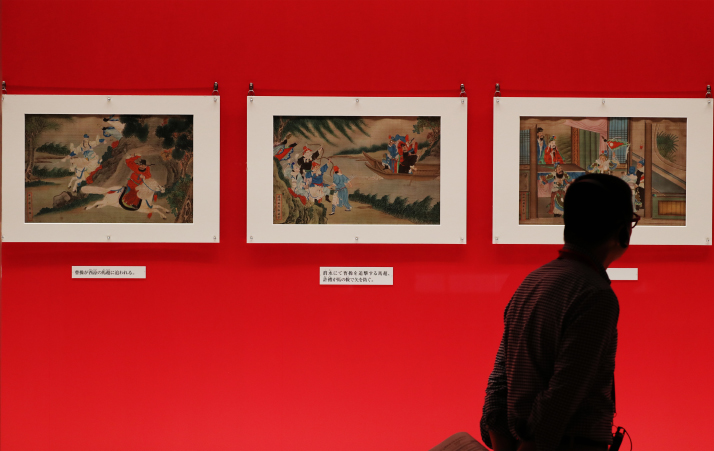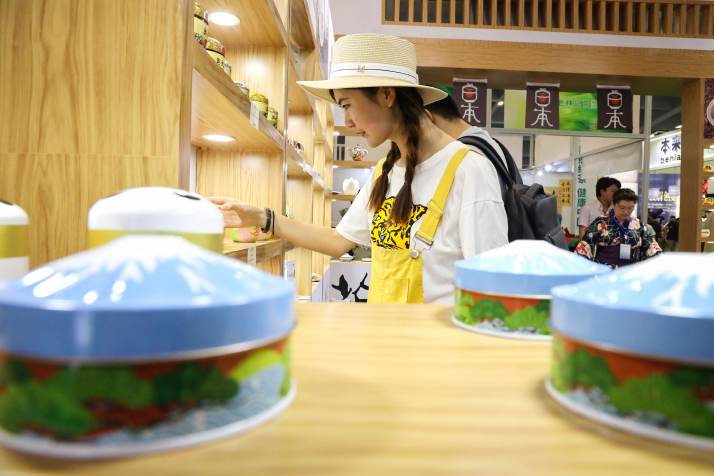
Candid Dialogue
New China-Japan strategic talks show positive signs
China and Japan have resumed a new round of strategic dialogue after a seven-year hiatus. Chinese Vice Foreign Minister Le Yucheng and Japanese Vice Foreign Minister Takeo Akiba co-chaired the dialogue in Nagano, Japan, in early August. The two sides concluded candid and in-depth exchanges on bilateral relations as well as international and regional issues of common interest, reaffirming that they will actively implement the consensus reached at a leaders’ meeting on the sidelines of the Group of 20 Summit in the Japanese city of Osaka in June, and strive to build China-Japan relations in line with the requirements of the new era.
Launched in 2005, China-Japan strategic dialogue is an important platform for the two countries to communicate ideas, enhance mutual understanding, seek consensus and build mutual political trust. Thus, the resumption of the dialogue is a sign that the call to return to a normal track of bilateral ties is being pursued. The turnaround in China-Japan relations in the past two years has shown some practical changes, creating favorable conditions for the future.

Positive Changes
The Japanese side began to adjust its policy toward China in 2017, when the international situation became increasingly complicated and unpredictable. In May of that year, Toshihiro Nikai, General Secretary of Japan’s ruling Liberal Democratic Party, led a delegation to China to attend the First Belt and Road Forum for International Cooperation (BRF). During his talks with Chinese President Xi Jinping, Nikai expressed a desire to improve bilateral ties and presented a personal letter signed by Japanese Prime Minister Shinzo Abe inviting Chinese politicians, especially the president, to visit Japan.
Along with Nikai, Japan sent Takaya Imai, Abe’s executive secretary and close confidant, to attend the First BRF. Imai’s presence indicated that the visit was not only an attempt to create an environment for improving bilateral relations, but also to show Japan’s shift toward a positive response to the Belt and Road Initiative which was put forward by the Chinese Government in 2013.
Abe, who took office for the second time in December 2012, with the main agenda of getting rid of the post-war system, actively implemented a series of policies to contain China. He envisaged a strategy whereby Australia, India, Japan and the United States would form a “democratic security diamond” to “safeguard” the maritime commons stretching from the Indian Ocean to the western Pacific with the actual intent of competing with China. Meanwhile, Abe described his approach to diplomacy—seeking partnership with countries that share similar values—as taking a bird’s eye view of the world. His foreign policy, similar to his value-oriented diplomacy during his first term in office, was actively carried out.

Japan showed a mixed attitude toward the Belt and Road Initiative, while proposing competing plans. In May 2015, the Japanese Cabinet announced that it would invest $110 billion in Asian countries over the following five years to meet the huge capital demand for infrastructure construction in the region. This was likely to launch a capital race with China.
In June of the same year, Japan did not participate in the signing of an agreement that provided the legal framework for the multilateral Asian Infrastructure Investment Bank (AIIB), passing up the opportunity to become a founding member. At the same time, Japan and the U.S. were actively promoting the Trans-Pacific Partnership negotiations to economically contain countries such as China. Interestingly enough, only two years later, Japan had to change its policy toward the Belt and Road Initiative.
This shift was not merely caused by the current international chaos. A decisive factor is that the initiative is not a strategy seeking hegemony or confrontation; instead, it is a win-win concept of cooperation in line with the current global trend. The initiative is also beneficial to Japan’s long-held strategy of opening up new markets. It is this realization that has led Japan to adjust its policy.
In April 2018, the Fourth China-Japan High-Level Economic Dialogue reached consensus on calling for outcomes on Belt and Road cooperation and promoting third-party cooperation between the two countries. In May, Chinese Premier Li Keqiang attended the Seventh Japan-China-ROK Trilateral Summit, coupling it with an official visit to Japan, where the two sides signed the Memorandum on China-Japan Cooperation in the Third-Party Market.
The improvement in China-Japan relations has provided timely benefits to Japan as the scale of bilateral trade has rebounded rapidly. Trade volume between the two countries was 33.34 trillion yen ($312.9 billion) in 2017, a record high, according to statistics provided by Japan’s Ministry of Finance.
Against this backdrop, Abe’s perception of China has also changed. When he attended a ceremony marking China’s National Day in 2017 at the Chinese Embassy in Tokyo hosted by Chinese Ambassador to Japan Cheng Yonghua, he expressed three views in his speech. Cooperation between Japan and China is not only important to both countries, but also indispensable to peace and prosperity in Asia and even the world, according to Abe. He said he firmly believes that cooperation in solving regional and global issues and making joint contributions to the international community will help build a brand new future in China-Japan relations. And he said that Japan is willing to make efforts to promote the development of a strategic and mutually beneficial relationship between Japan and China.
Subsequently, before his visit to China in 2018, Abe said that he expected to expand the exchanges between the two peoples in various fields and lift bilateral relations to “a new stage” with the support of high level exchanges. Japanese media also commented that under the countries’ two leaders, bilateral relations are gaining momentum, seeking an era that goes from competition to collaboration. During his visit last October, Abe put forward his proposal of “switching from competition to collaboration.” The fact is that China never showed any intention of competing with Japan. So Abe’s suggestion was more of a signal marking a shift in his country’s stance toward China.
Neighbors Forever
This year, China-Japan relations have continued to warm up. During their talks in Osaka, Xi and Abe, reaffirmed that China and Japan are “eternal neighbors.” Xi stressed that the two sides should always abide by the principles set forth in the four political documents signed between China and Japan, implement the political consensus that they are cooperative partners and not a threat to each other, enhance mutual trust, and push China-Japan relations along the right track of peace, friendship and cooperation.
Normally, relations between countries are defined in accordance with political conditions, while relations between neighboring countries are an objective reality. The positioning of apolitical eternal neighbors is based on a shared culture since good-neighborliness is one of the core values in Confucianism. However, some Western values tend to choose beggar-thy-neighbor policies in international relations. In Asian culture, the emphasis on neighbors signifies that two countries should always live in peace and resolve differences through peaceful means. This will continue to be the bottom line for the future development of China-Japan relations.
The most important issue facing relations will be how to build bilateral ties in line with the consensus of the two leaders and meet the requirements of the new era. China and Japan should give full play to the foundation of Asian civilization, get rid of the obsolete thinking mode of power competition and interest gaming, and strive to build an equal and win-win world through cooperation. This should also be the guiding ideology of future China-Japan strategic dialogue.
 Facebook
Facebook
 Twitter
Twitter
 Linkedin
Linkedin
 Google +
Google +










